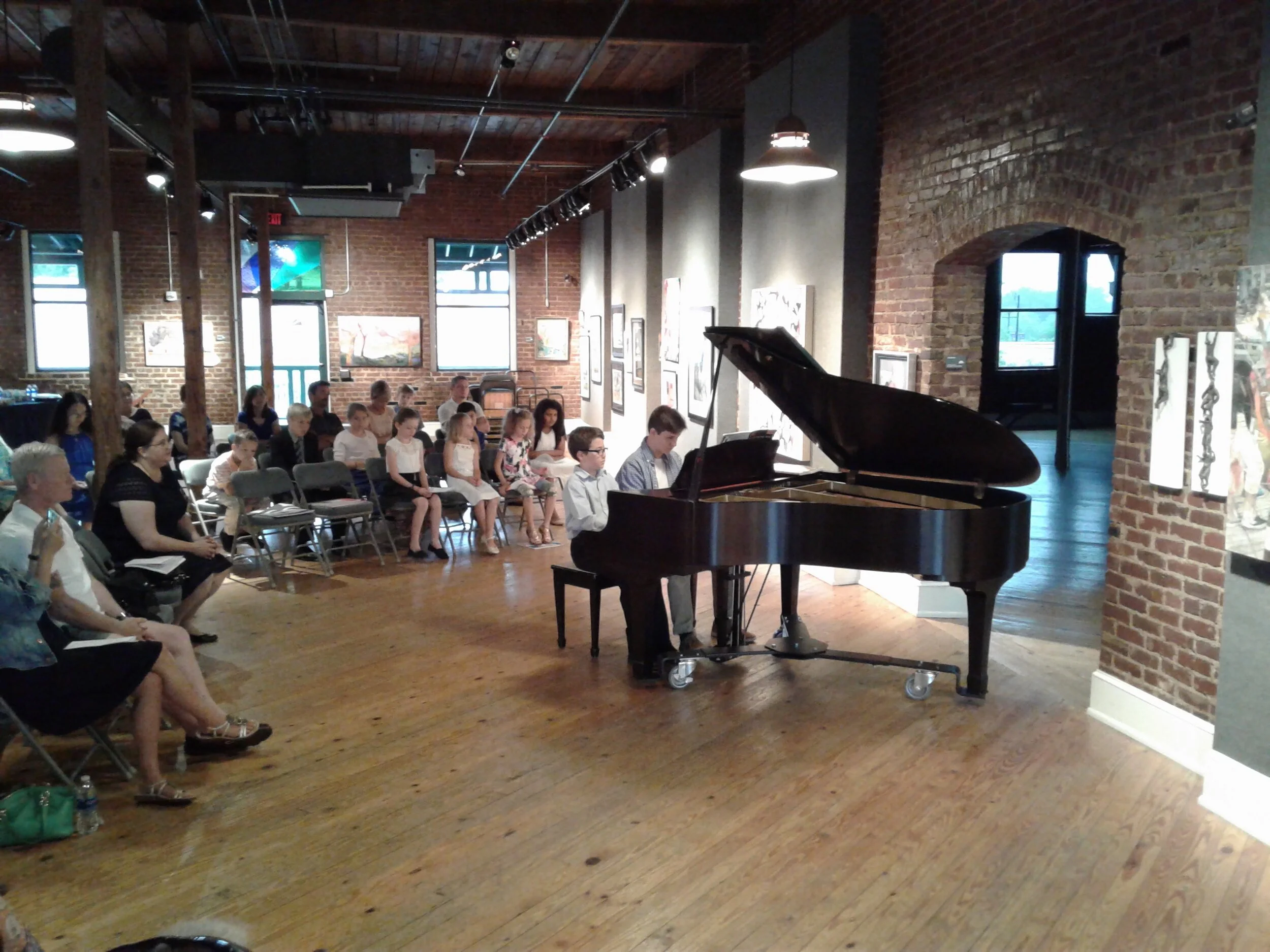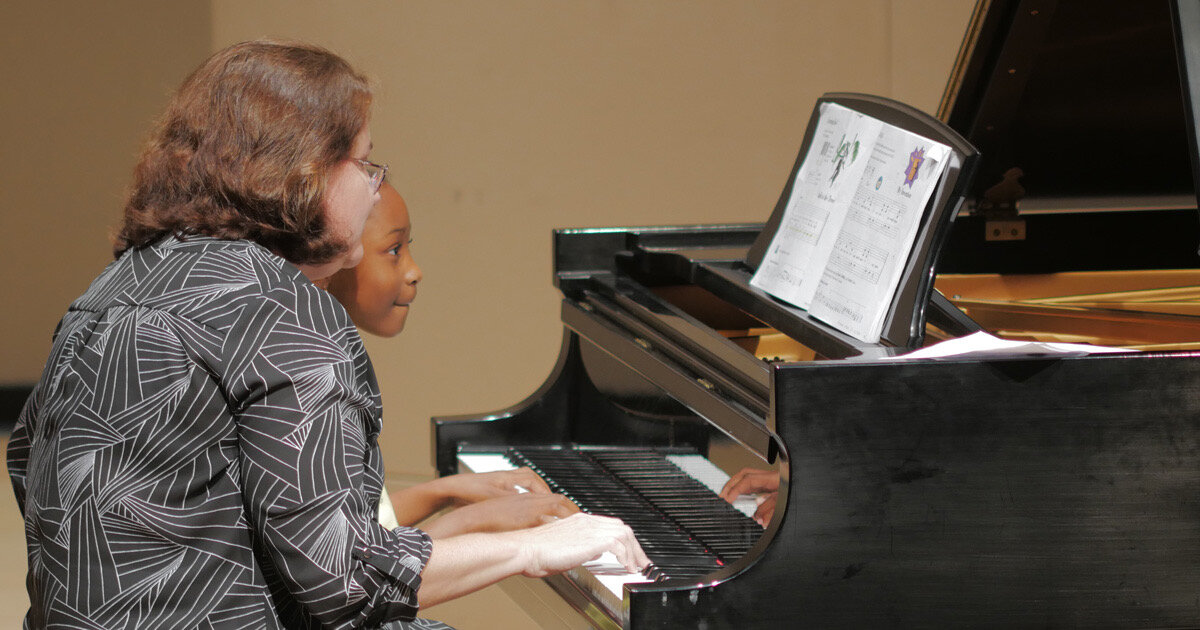Teaching From Home
A Very Candid Account of the PROS and CONS
PART 4: Renting Your Own Space to Teach
As part of this blog series, we have already discussed the advantages and disadvantages of teaching for a private academy, for a nonprofit, and within a church community. I invite you to read the first three parts of the blog first. They may give you ideas to consider while deciding if renting is the right move for your studio or if there is another teaching format that would work best in your situation. The list below reviews the specific aspects of going into business for yourself.
PROS
You can find spaces that have built-in areas for small events (e.g., master classes), ample waiting rooms, and multiple small studios, making it easy to collaborate with other teachers and musicians, host events and popular group classes, and expand as your business grows.
You can have fun choosing and customizing your ideal location and space. If you have a teacher who can partner with you, you can enjoy the freedom of designing your ideal studio while sharing responsibilities.
There is a lot of opportunity for creativity— from designing your logos, to deciding how to decorate your place, to developing your own studio materials and marketing tools. Inventing your space can be extraordinarily fulfilling. Moreover, you can fully develop your unique teaching style and establish a school that truly represents your core values as a teacher, possibly making a much larger imprint in your community than when you are teaching for someone else.
CONS
Have you seen the costs? Oh my! Though I haven't rented a space all on my own, I was privy to the monthly expenses of the nonprofit academy I taught at for many years. Even taking into consideration that the owner of the space was providing a beneficial lease to support the arts and that Anderson has a fairly low cost of living, the academy needed well over 50 students just to stay afloat. Because the board needed to keep costs low, the academy was not in the best location. It was difficult to afford a nicer space in a prime location that would attract more students. Consequently, our enrollment stayed low because of lack of visibility, the "worn" look of the older building, and the safety issues related to the area. These never-ending financial "dire straits" eventually led to the academy having to close because it couldn't attract enough students to stay afloat.
Any teacher knows that the number of students taking lessons can vary from one semester to the next, sometimes due to circumstances out of our control, such as a pandemic. Can you afford the expense if your studio is not able to operate at its full or ideal capacity? Can you take the loss of the summer months? Even with creative summer camps and lessons, it can be difficult to keep up your numbers from June to August.
Certain leases will make you liable for expensive repairs and maintenance expenses to the building.
Depending on the location, you may have to worry about safety if you are teaching alone into the later hours of the evening.
In order to share expenses or to carry a broader vision, you may need to hire other teachers to work with you. Depending on your location, this can be quite challenging. Some small towns have only a handful of highly trained teachers, and they are often already booked.
The owner of an academy in Florida, herself a Juilliard graduate, told me that she was so overburdened by all the administrative work, phone calls, and interactions with clients that she never had time to practice or personally teach the students. Her academy was incredibly successful, but she truly missed being able to actually teach. You have to evaluate where your true priorities are and what your own vision of balance and success is. It is not always maintaining 100 students and having to teach 6 times a week.
Conclusion: At the 2019 MTNA National Convention, I observed an excellent presentation on this topic by Angela Marshall & Davis Dorrough of CreativePianoTeacher.com. (You can click this link to see their notes as well as peruse their excellent blog.) The two presenters showed videos of their incredibly successful academy. They were friends and like-minded colleagues with complementary abilities who had partnered together to rent the venue and share expenses and responsibilities. They attributed their success largely to their teamwork. They strongly recommended moving from a house studio to a rented space only when you have a partner with whom to share the journey, and only once your clientele has fully outgrown your current home studio and schedule — basically, if you literally have more demand that you can accommodate. I believe that this holds true. Unless you have a full teaching schedule already, solvent resources to take a possible loss, people in mind to help you and work with you, and a fair amount of marketing and business acumen, I would be cautious. Study your business plan and all possible expenses carefully before proceeding, and scout the area for current demand and teacher supply. Do not underestimate the value of an excellent location. Then, consider if it would be better to take the leap with a knowledgeable and like-minded partner who can take on the roles at which you are less experienced.
Click here if you want to read a different segment of this blog post on Teaching From Home:
Part 1: Teaching at an Academy
Part 2: The Particularities of Teaching for a Nonprofit
Part 3: Establishing Your Studio Within a Church
Part 5: Teaching From a Home Studio

